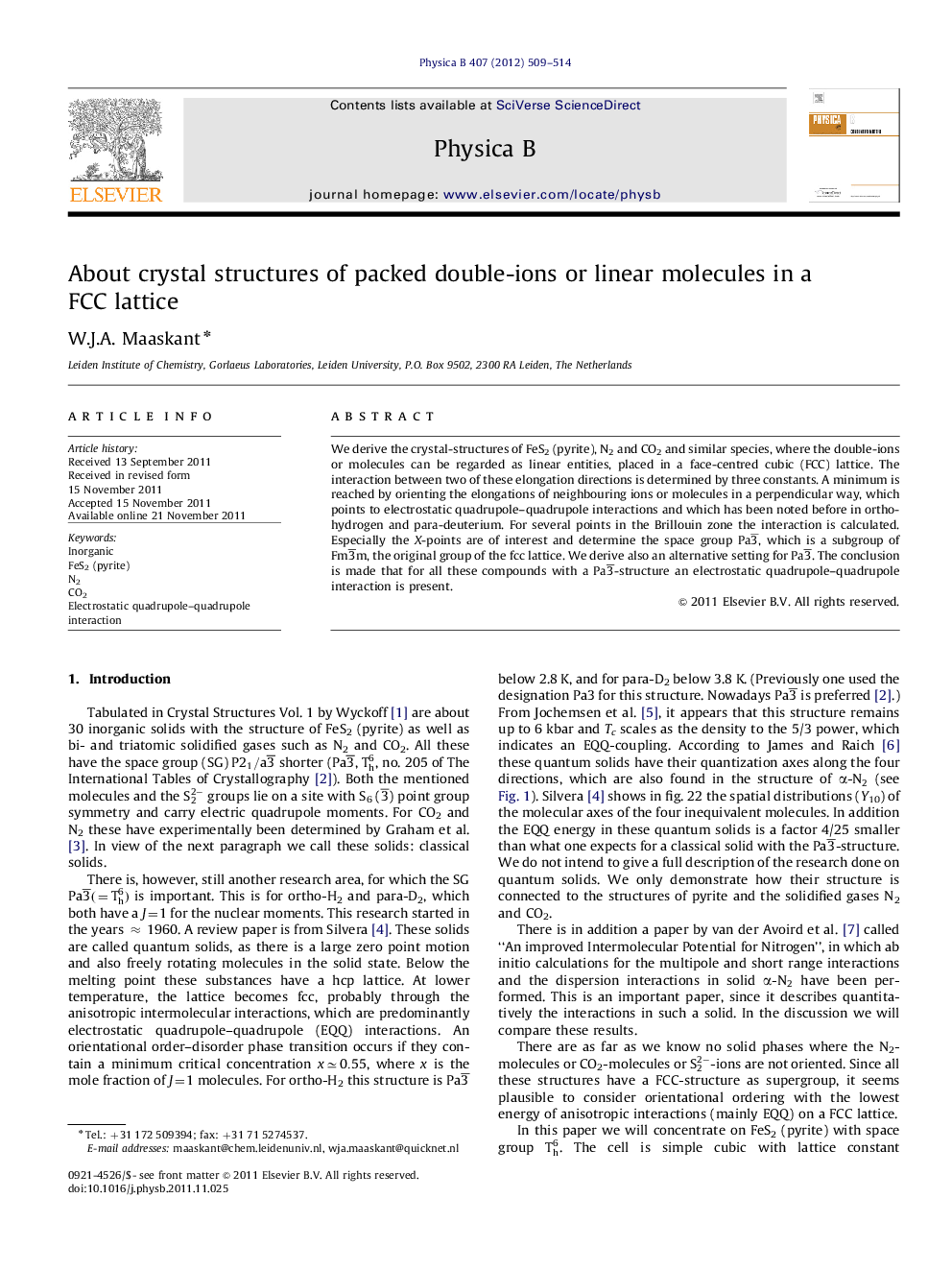| Article ID | Journal | Published Year | Pages | File Type |
|---|---|---|---|---|
| 1810855 | Physica B: Condensed Matter | 2012 | 6 Pages |
We derive the crystal-structures of FeS2 (pyrite), N2 and CO2 and similar species, where the double-ions or molecules can be regarded as linear entities, placed in a face-centred cubic (FCC) lattice. The interaction between two of these elongation directions is determined by three constants. A minimum is reached by orienting the elongations of neighbouring ions or molecules in a perpendicular way, which points to electrostatic quadrupole–quadrupole interactions and which has been noted before in ortho-hydrogen and para-deuterium. For several points in the Brillouin zone the interaction is calculated. Especially the X -points are of interest and determine the space group Pa3¯, which is a subgroup of Fm3¯m, the original group of the fcc lattice. We derive also an alternative setting for Pa3¯. The conclusion is made that for all these compounds with a Pa3¯-structure an electrostatic quadrupole–quadrupole interaction is present.
